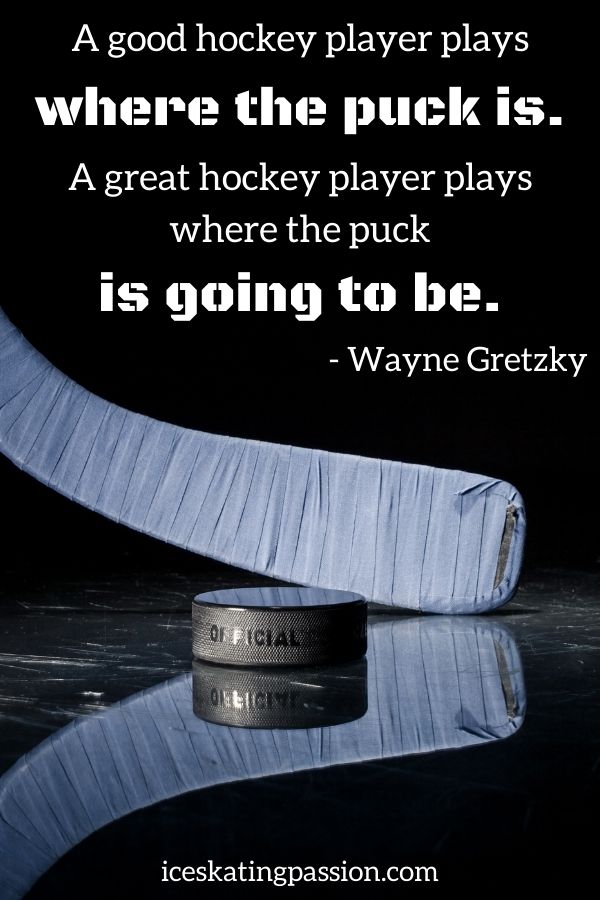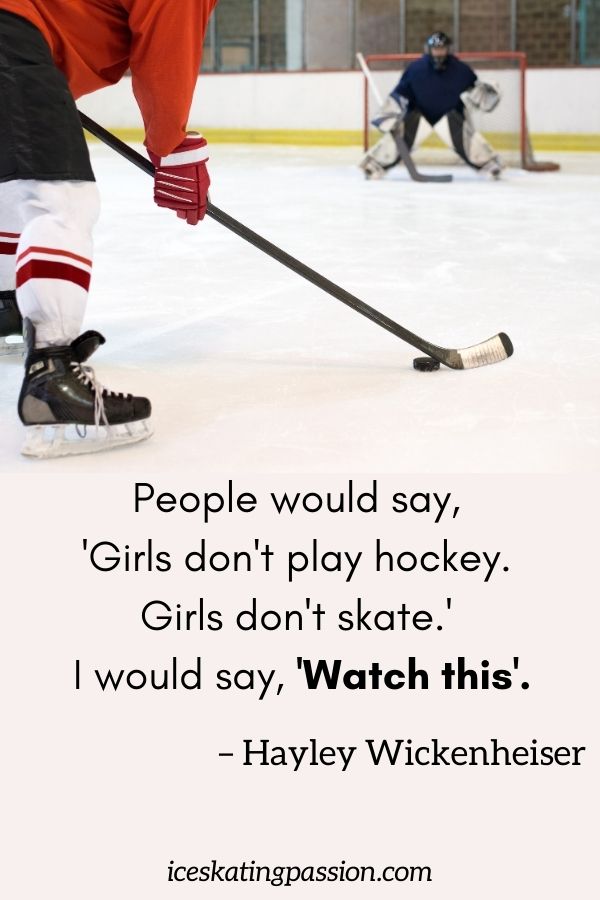This tiny black piece of rubber can go so fast and make people crazy... the answer is the hockey puck!
Below is an article to learn about it:
- the first hockey puck,
- the hockey puck history,
- fun hockey puck facts,
- dimensions, weight,
- speed,
- how it's made,
- and much more...
This article contains affiliate links. If you purchase using my link, I get a commission at no extra cost to you (learn more).
Ice Hockey Puck history
If you’ve ever watched an ice hockey game then you know there’s no ball.
Ice hockey uses a strange little black object. It is called a puck (see further in the article to understand the name).
Hockey players fight for it, handle it with sticks and try to get it across the rink into the net, past the goalie.
But how did we end up playing hockey like this?

What did hockey players use before the puck?
According to legends, the first hockey players were playing with pieces of frozen cow dung as pucks. However, there is no proof.
Other early versions were probably made out of pieces of wood and stones.
The first ice hockey puck: who invented it?
The first officially recorded pucks were lacrosse rubber balls of which the rounded edges were cut. This puck was square.
It is believed to have been first recorded in 1875 (during the first official hockey match), in 1876 or 1886 depending on the sources... One says that it was first recorded in print on 7th February 1876 in the Montreal gazette.
In the late 1800' and early 1900's, they tried improving it to make it slide on the ice. Rubber was used as a coating.
Some were 2 pieces of rubber glued together, but they did not last long.
Finally, a new method was developed in Europe to create flat balls: a flat piece of wood with a coat of vulcanized rubber.
It is believed to have been the inspiration for the modern sport. However, there are no pictures or evidences.

Evolution of the hockey puck - standardization and the Foxtrack
The modern puck design dates back to around 1940. Pucks were then made in factories. It was a mix of rubber and bonding materials as well as carbon black. The mix was shaped, cut and cured in an oven. Therefore, they were kind of standardized for consistent play and to facilitate the manufacturing.
The NHL standardised the puck to be used for the league in the early 1990's.
At the same time, television wanted to improve the visibility of the puck.
The first trial was the Firepuck with reflective materials, but it stopped being used.
In 1995/96, the "Fox track smart puck" was developed. It contains electronics to track its position, allowing the tv to trace the path across the ice with a blue halo (or red/green when shot at different speeds). The viewer could track the movement of the puck more easily.
Fox television started using them in 1996.
Making a Hockey puck - dimensions, material...
Material - what is a hockey puck made of?
Have you ever watched a game and wondered what a hockey puck is made of? Well....
Hockey pucks are all made of vulcanized rubber (similar to tires). This material:
- can slide fast on the ice (it is very dense)
- can withstand shots without damaging
- is bouncy at normal temperature but does not bounce when cooled down
Vulcanization is a chemical treatment. Sulfur or other chemicals are used to alter the physical properties of rubber. This way you keep the positive: the resistance to rust, corrosion and elasticity, but you fix the softness and elasticity of the unmodified rubber. Learn more about vulcanization here.

Hockey puck dimensions & weight
Since the 1990s, the NHL has defined standardized dimensions for the puck (and they are listed in the USA rule book - rule 306):
- Color = black
- Thickness = 1 inch = 25,4 mm
- Diameter = 3 inches = 76,2 mm
- Weight = between 5.5 and 6 ounces (155 to 170 grams)
- Edge texture = grooves carved into the surface (for the hockey stick to have something to grab)
Other sizes and weight can be used for
- children's hockey leagues (4 to 4,5 ounces = 113g -128 grams blue)
- for strength training (up to 10 ounces = 283 grams - sometimes red)
Practice or decorative pucks can be found with logos and in other colors.
How are regulation pucks made?
Who makes hockey pucks?
NHL games hockey puck can only be made by approved manufacturers.
So far, the major manufacturers have been approved in: USA, Canada, Russia, China, Czech Republic and Slovakia.
The famous puck brands are:
- Spalding (USA)
- Viceroy (Canada)
- Sher-Wood (Canada)
- InGlasCo (Canada) - official supplier to the NHL as of 2021

Manufacturing process
The main steps are:
- Mixing the granular rubber with the bonding material + antioxidants + coal dust
- Shape into a circular log that is 3 inches in diameter
- Cut into one inch pieces
- Place the piece of rubber into a mold
- Compress at room temperature
- Silk-screen any logos or designs with rubber-based ink
Inspection
Official pucks are inspected to make sure that:
- they are compliant in size and weight.
- There is no soft rubber
- There are no air bubbles
- They do not bounce after 10 days of freezing
Pucks that fail are recycled.
Interesting facts about the hockey puck / trivia
Average speed of the hockey puck
During a hockey game, a puck generally reaches speed of 100 miles per hours (161 km/h).
The official Guiness World record is at 110.3 miles per hour (177.5 km/h) by Denis Kulyash on February 2011
However, recordings that are official or not have shown speeds of 114 and even 118 mph.
They go really fast! Which is why protective equipment, including mouthguards, are essentials.
Pucks are frozen before a hockey game
For NHL games, pucks have to be stored at 14°F (-10°C) before being used in a game.
As discussed in the description before, the rubber is bouncy. By freezing it, it prevents the bounce and they become easier to control.
They are stored in a freezer. Pucks are rotated.
How many pucks are used during an NHL game?
To keep that temperature, pucks must be changed regularly with fresh ones from the freezer.
An average NHL game uses over a dozen pucks, sometimes a lot more.
New technology makes the lettering change color based on temperature. This alerts the officials that it is time to change the puck.
Fun fact
Sometimes the puck flies and ends up in strange places! This was the case of Alexander Wennberg, a Swedish player. The puck got lodged in his trousers, so he skated to the goal and squatted to make it fall (the use of hands is not allowed). The goal actually counted.
About the word puck
Why is it called a puck?
The origin of the work puck is not clear. (oxford states "unknown origin")
The various suggestions are:
- from the Scottish Gaelic puc or the Irish poc, meaning "to poke, punch or deliver a blow"
- from the old English word "pouke" which means “devil,” “evil spirit,” - note; the “Puck” was a mischievous Satyre spirit in Shakespeare’s “A Midsummer Night’s Dream". He was constantly “poking people the wrong way.”
- From the Irish settled in Halifax, Canada who were playing hurling in which the verb to puck was used
A hockey puck is also referred to as a "biscuit".
Hockey puck in other languages - how is it called
- in French = Palet (in France) or Rondelle (in Canada) - the name has its origin in the shape of the puck
- In German = Eishockey-Puck
- In Russian = хоккейная шайба ("khokkeynaya shayba")
- in Finnish = kiekko
- In Swedish = hockey puck
Hockey pucks gifts - personalized or NHL
Personalized hockey pucks
To play, practice or decorate a room, you can choose a hockey puck to personalize (other colors in my shop).
It makes a great gift for a hockey fan or a hockey player gift.
NHL team hockey pucks
And if you know someone who is fan of a specific hockey team, you can also offer the NHL official team hockey puck. See all the available teams HERE.
You can practice handling pucks at home. Check out my tips on choosing your hockey shooting pad.
Complete your hockey equipment set!
Other protective gear to get for hockey players:
- Best hockey helmets - read article
- Best hockey gloves for players - read article
- Best hockey mouthguard - read article
- Best hockey shin guards - read article
- Best hockey elbow pads - read article
- Best hockey shoulder pads - read article
And if you want to work out off ice:
- 10 essential elements to cover in your off-ice workouts - read article
- 10 best off-ice hockey training equipment - read article
- Best hockey shooting pads and tiles - read article
- Best slide boards for hockey training - read article
- Best synthetic ice for hockey players - read article
- Best net targets and shooting tarps - read article
- Best hockey passers and rebounders - read article
- Best balance boards for hockey players - read article
- Best stick handling tools - read article

































































































































